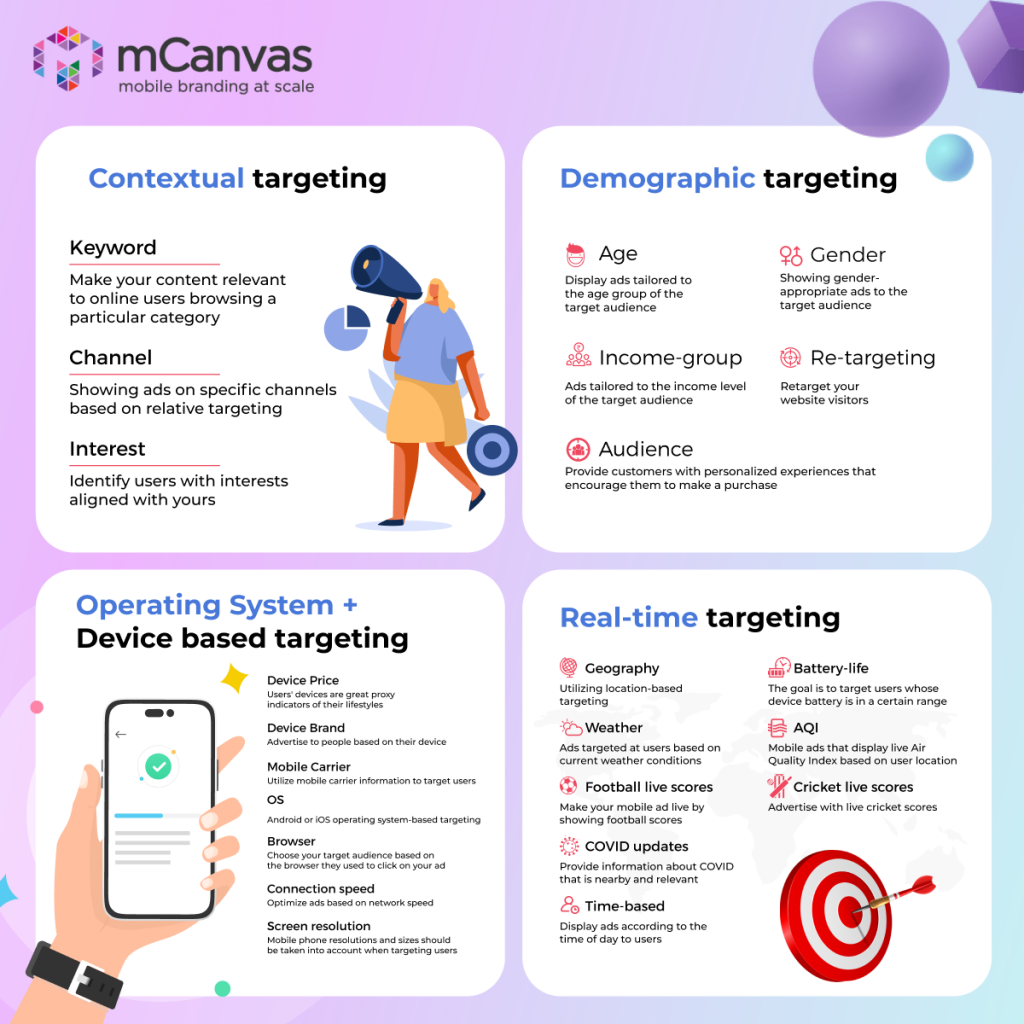
Why Granular Targeting is Important in 2023?
Historically, ad platforms segmented audiences based on first-level parameters such as age, location, or gender. Creating a successful advertising campaign today begins with a comprehensive understanding of your target audience.
Broadcast advertising was the only form of advertising that was familiar back then. Publish your message on giant billboards, flood the airwaves with ads, take out full-page ads in magazines and newspapers. Basic strategy was to send as much information as possible, then the right people would hear it if the signal was strong enough.
Brand value is often best conveyed to the audience in ads that demonstrate an intrinsic or extrinsic connection between the brand and its audience. It doesn’t make sense to make people work hard to understand what the ad is saying. It is important to communicate the message clearly and to avoid confusion.
Any noteworthy advertising campaign requires a thorough knowledge of the target audience, like their demographics, interests, behaviour, and product specifics, before we can proceed with a campaign worthy of our ad dollars.
Meet Granular Targeting – a highly specific and precise division of the target audience into various segments relevant to your business.
Go granular with your insights once you have defined the personas of your very best customers. In granular marketing, the target is extremely specific and precise.
Why go granular in 2023?
Besides allowing you to influence buying decisions, here are some of the granular targeting’s other merits:
- Decrease ad spend waste
Marketers often assume that mass appeal gets the most out of their marketing budgets by executing ad campaigns. In theory, it does seem like a better use of your budget – the wider the reach, the lower the costs.
But there’s a flip side. Overserving those outside your relevant target segments is a waste of money and effort.
Granular marketing helps optimize the ROI of your marketing spend, simultaneously improving the buying experience with personalized ads.
In the case of the Ryzen Pro processor, an engaging user experience targeted the audience based on their age and technological interests. They received an unbelievable reach of 3.3 MN users with a click-through rate of 1.19%.
- Develop better brand perception
76% of customers get frustrated when brands don’t meet their personalization needs.
When you improve ad relevance through granular advertising, you capture the audience when they’re most receptive. They start perceiving you more favorably because you recognize their needs and develop customized experiences.
When JK Tyre wanted to reach a specific audience, the brand used a geo-targeted, voice-enabled, lingual mobile ad.
It achieved a CTR of 2.2% (11 times higher than the industry average of 0.2%), showing that audiences appreciated the brand’s understanding of their preferences.
- Do more with less
It may seem contradictory to have more opportunities with lesser people. But when you use in-depth and real-time targeting for segmentation, you can discover new ways to engage with the audience.
Brands and marketers can use this in-depth information about customers to create value, support product development, adapt pricing, drive more conversions, build loyalty, and, ultimately, enrich the buying journey.
This can best be illustrated by Dermatix. Despite targeting a very small interest-based, female, gen Z audience in a very limited geographic area, they reached 2.77 million users with a 5.5% engagement rate.
Granular targeting keeps the advertising ecosystem on its toes
You can target the right customers at the right time on the right platform using granular advertising, as it provides an accurate picture of buyer preferences.
Take OnePlus‘s example. The brand promoted its premier gaming edition phone – Nord 2 Pac Man – via an augmented reality ad. It reached out to a unique audience of 18-44 years who were tech, mobile, and gaming enthusiasts. With specific targeting, the campaign surpassed Oracle Moat’s industry benchmarks by a 122% In-view time & 74% fully on screen rate!
Backed by actionable audience insights, marketers can also avoid bidding against themselves for ad space. Additionally, you can optimize campaigns better in a privacy-first digital world.
Types of granular targeting
Here’s a quick overview of four types:

Users are more likely to respond positively when they see an ad catering to their needs instead of being forcefully promotional. That’s what makes granular targeting an exciting avenue to explore in 2023.
Interested in going granular? Get in touch with our folks to strategize your ad campaign today!